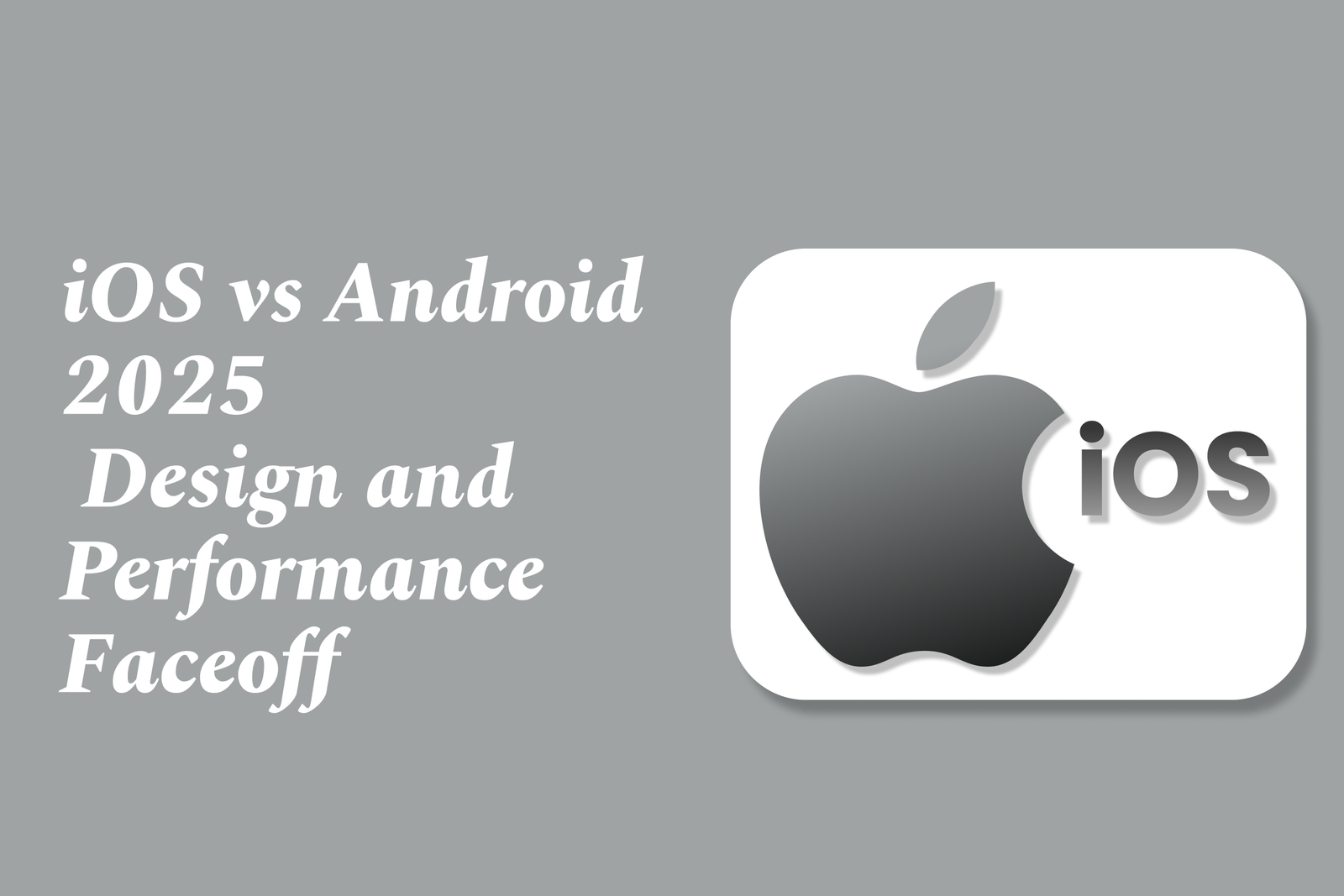iOS vs Android 2025: Design and Performance Faceoff
The iOS vs Android 2025 faceoff explores the latest in design innovation and performance, comparing Apple's seamless, optimized ecosystem with Android's diverse hardware and customization—highlighting how each platform meets user needs in speed, app quality, and overall experience.
iOS vs Android 2025: Design and Performance Faceoff
1 ) Market Share and User Base
Android dominates the global smartphone market with 72.47% share in 2025.
iOS leads in the U.S. with a 57.97% market share, representing 155 million iPhone users in 2024.
The widespread use of both platforms influences how brands capture attention and engage customers.
2 ) Application Design and Performance Trends
Historically, many popular apps like Instagram, Snapchat, and Google apps have run smoother and looked better on iOS than on Android devices.
This legacy perception stems from factors such as OS uniformity and hardware software optimization by Apple.
As of 2025, the question remains if iOS apps continue to maintain this edge, with some users and critics reporting that Android has improved but iOS often still offers more consistent app experiences.
3 ) Hardware Competition: Flagship Devices
The iPhone 16 Pro Max vs Samsung Galaxy S25 Ultra battle epitomizes the flagship rivalry.
Both devices deliver exceptional performance, including powerful processors and high quality cameras.
While Samsung’s S25 Ultra boasts a superior camera AI and Snapdragon 8 Elite chip, the iPhone still competes closely with its efficient hardware integration and polished user interface.
Pricing is comparable, though Samsung’s top tier models are slightly more expensive.
4 ) User Experience and Ecosystem
iOS benefits from a tightly controlled ecosystem, allowing superior app optimization and seamless integration across devices.
Android’s diversity in hardware and manufacturer customizations can create variability in app performance and design consistency but also provides greater customization options.
User preference often hinges on choice between uniformity and variety, as well as design aesthetics versus flexibility.
5 ) In App Spending and Engagement
Global in app purchase revenues reached an impressive $150 billion in 2024, showing significant growth year over year.
iOS users traditionally spend more on apps and in app purchases compared to Android users, reflecting demographic and economic differences.
6 ) Market and Developer Implications
The dominance of Android globally means developers must ensure their apps run well across a wide range of devices with varying specs.
Meanwhile, iOS’s consistent hardware specs allow for more tailored and often higher quality app experiences.
Brands and developers leverage these insights to optimize mobile engagement and foster loyalty.
7 ) Summary
Both platforms have evolved significantly, narrowing gaps in app design and performance.
iOS continues to impress with consistency and premium app experiences, especially in the U.S. market.
Android leads globally with a huge user base and strong hardware innovations.
The 2025 faceoff reveals a nuanced landscape where design preferences, performance needs, and ecosystem integration inform user choices and developer strategies.
https://justacademy.in/news-detail/performance-testing-in-flutter-4.0
https://justacademy.in/news-detail/new-android-widgets-trends
https://justacademy.in/news-detail/the-rise-of-react-native-in-iot-applications
https://justacademy.in/news-detail/flutter-vs-kotlin-multiplatform-2025
https://justacademy.in/news-detail/flutter-for-logistics-and-delivery-apps
Related Posts
Java supports GDPR and data privacy by enabling secure data handling through encryption, controlled access, and precise data management. It allows developers to minimize PII exposure, ensure data confidentiality, and design workflows that comply with data protection regulations effectively.
Java code quality tools have evolved to include advanced static analysis, integrated security checks, and AI-powered code reviews. These updates help developers detect bugs, enforce coding standards, and enhance security, streamlining the development process and improving overall code reliability.
Java remains a cornerstone in big tech companies, evolving with modern features like records, pattern matching, and virtual threads. Its robust ecosystem, enhanced performance, and growing AI integrations keep it vital for both legacy systems and innovative new projects.
Java and CI/CD pipeline optimizations streamline Java application development by automating builds, tests, and deployments. They improve efficiency through parallelization, caching, and secure secrets management, enabling faster feedback loops and more reliable, scalable software delivery.
Java supports modern cryptography standards through its flexible Java Cryptography Architecture (JCA), enabling integration of advanced algorithms like AES, EdDSA, and post-quantum tools. Libraries like Bouncy Castle offer FIPS-certified, hardware-accelerated implementations for secure development.
Java 23 enhances record patterns by enabling concise, direct destructuring of record components within pattern matching, simplifying type checks and data extraction. This improvement boosts code readability and expressiveness by reducing boilerplate in handling immutable data classes.
Java remains a top choice for mobile app backends, powering scalable, secure, and high-performance server-side solutions. Latest trends include cloud-native microservices, reactive programming, and enhanced JVM optimizations, enabling efficient, flexible, and robust mobile backend development.
Java SE 24 and LTS Java SE 21 offer enhanced features and performance, while Apache Spark 4.0.0 introduces Scala 2.13 support and advanced ML and SQL capabilities. Together, they empower developers to build scalable, high-performance data applications with modern tools.
JUnit 5 modernizes Java testing with a modular architecture, improved assertions, and seamless Java 8+ support. Beyond JUnit, tools like Mockito and AssertJ enhance mocking and assertions, creating a powerful, flexible ecosystem for writing clean, efficient Java unit tests.
Java plays a pivotal role in cloud automation tools by providing a robust, platform-independent language used to build scalable automation frameworks like Jenkins and Selenium, enabling efficient CI/CD pipelines, testing, and orchestration across diverse cloud environments.










